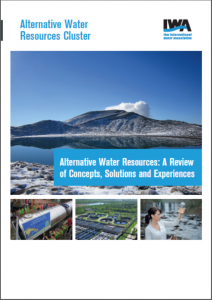As water usage continues to exceed sustainable rates and greater quantities of pollutants come in contact with once pristine water sources, more people are becoming concerned as to where their water will come from. By 2030, the world is projected to face a 40% global water deficit under the business-as-usual scenario. In addition to this, climate change is increasing the frequency and intensity both of droughts and of storm events, while higher air temperatures necessitate greater water use for crop irrigation and livestock. For these reasons, alternative water resources (AWRs), such as rainwater harvest (RWH), water reuse and desalination, as well as moving towards more holistic, integrated approaches to water management are becoming more popular for meeting the global water needs that may not be satisfied by a single water source.


